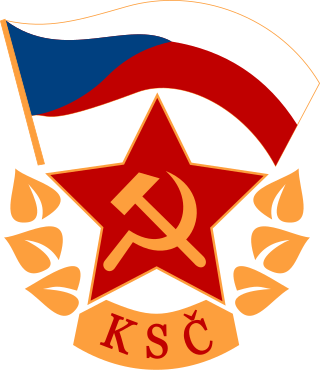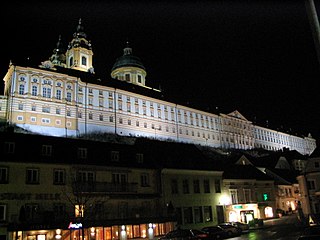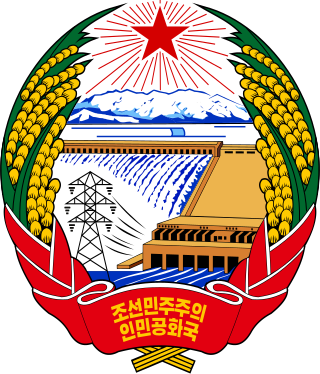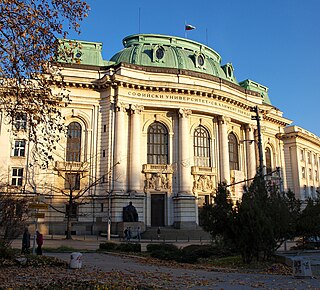Related Research Articles

Education in the Netherlands is characterized by division: education is oriented toward the needs and background of the pupil. Education is divided over schools for different age groups, some of which are divided in streams for different educational levels. Schools are furthermore divided in public, special (religious), and general-special (neutral) schools, although there are also a few private schools. The Dutch grading scale runs from 1 to 10 (outstanding).

Gymnasium is a term in various European languages for a secondary school that prepares students for higher education at a university. It is comparable to the US English term preparatory high school or the British term grammar school. Before the 20th century, the gymnasium system was a widespread feature of educational systems throughout many European countries.

Education in Albania for primary, secondary, and tertiary levels are mostly supported by the state. The academic year is much similar to that as in the United States, classes starts almost in September or October and end in June or July. Albanian is the language of instruction in all public schools. The education takes place in three stages such as the primary, secondary, and pre-university education. There are about 5000 schools throughout the nation.
Education in Slovakia consists of a free education system based on 10 years of compulsory school maintenance.
Education in China is primarily managed by the state-run public education system, which falls under the Ministry of Education. All citizens must attend school for a minimum of nine years, known as nine-year compulsory education, which is funded by the government.
From the Communist coup d'état in February 1948 to the Velvet Revolution in 1989, Czechoslovakia was ruled by the Communist Party of Czechoslovakia. The country belonged to the Eastern Bloc and was a member of the Warsaw Pact and of Comecon. During the era of Communist Party rule, thousands of Czechoslovaks faced political persecution for various offences, such as trying to emigrate across the Iron Curtain.
Czechoslovakia, of all the East European countries, entered the postwar era with a relatively balanced social structure and an equitable distribution of resources. Despite some poverty, overall it was a country of relatively well-off workers, small-scale producers, farmers, and a substantial middle class. Nearly half the population was in the middle-income bracket. It was a balanced and relatively prosperous Czechoslovakia that carried nationalization and income redistribution further than any other East European country. By the mid-1960s, the complaint was that leveling had gone too far. Earning differentials between blue-collar and white-collar workers were lower than in any other country in Eastern Europe. Further, equitable income distribution was combined in the late 1970s with relative prosperity. Along with East Germany and Hungary, Czechoslovakia enjoyed one of the highest standards of living of any of the Warsaw Pact countries through the 1980s.

The Communist Party of Czechoslovakia was a communist and Marxist–Leninist political party in Czechoslovakia that existed between 1921 and 1992. It was a member of the Comintern. Between 1929 and 1953, it was led by Klement Gottwald. The KSČ was the sole governing party in the Czechoslovak Socialist Republic though it was a leading party along with the Slovak branch and four other legally permitted non-communist parties. After its election victory in 1946, it seized power in the 1948 Czechoslovak coup d'état and established a one-party state allied with the Soviet Union. Nationalization of virtually all private enterprises followed, and a command economy was implemented.
Although political control of Communist Czechoslovakia was largely monopolized by the authoritarian Communist Party of Czechoslovakia (KSČ), the party technically shared political power with other parties of the National Front. The leader of the KSČ was de facto the most powerful person in the country during this period. Czechoslovakia's foreign policy was openly influenced by the foreign policy of the Soviet Union.

The Republic of Austria has a free and public school system, and nine years of education are mandatory. Schools offer a series of vocational-technical and university preparatory tracks involving one to four additional years of education beyond the minimum mandatory level. The legal basis for primary and secondary education in Austria is the School Act of 1962. The Federal Ministry of Education is responsible for funding and supervising primary, secondary, and, since 2000, also tertiary education. Primary and secondary education is administered on the state level by the authorities of the respective states.

Education in South Korea is provided by both public schools and private schools. Both types of schools receive funding from the government, although the amount that the private schools receive is less than the amount of the state schools.

Education in North Korea is universal and state-funded schooling by the government. As of 2021, UNESCO Institute for Statistics does not report any data for North Korea's literacy rates. Children in the DPRK go through one year of kindergarten, five years of primary education, and six years of secondary education, after which it is possible to attend university or technical college.
Education in the Polish People's Republic in years of its existence was controlled by the communist state, which provided primary schools, secondary schools, vocational education and universities. Education in communist Poland was compulsory from age 7 to 15.

The educational system in Hungary is predominantly public, run by the Ministry of Human Resources. Preschool kindergarten education is compulsory and provided for all children between three and six years old, after which school attendance is also compulsory until age of sixteen. Primary education usually lasts for eight years. Secondary education includes three traditional types of schools focused on different academic levels: the Gymnasium enrols the most gifted children and prepares students for university studies; the secondary vocational schools for intermediate students lasts four years and the technical school prepares pupils for vocational education and the world of work. The system is partly flexible and bridges exist, graduates from a vocational school can achieve a two years program to have access to vocational higher education for instance. The Trends in International Mathematics and Science Study (TIMSS) rated 13–14-year-old pupils in Hungary among the best in the world for maths and science.

The Nationwide Unified Examination for Admissions to General Universities and Colleges (普通高等学校招生全国统一考试), commonly abbreviated as Gaokao, is the annual national undergraduate admission exam of China, held in early June. The exam is held by provincial governments under directions from the Ministry of Education and is required for undergraduate admissions to all higher education institutions in the country. The Gaokao is taken by high school seniors at the end of their final year.

Education in Bulgaria is guided and overseen by Bulgarian Ministry of Education and Science. Compulsory education includes three years of pre-primary education, primary education, and secondary education. The schools start by age of seven and end the age of 18. Compulsory education at state schools is free of charge. The state and private higher education schools, colleges and universities charge fees, although they offer students scholarships.
The system of education in Iceland is divided in four levels: playschool, compulsory, upper secondary and higher, and is similar to that of other Nordic countries. Education is mandatory for children aged 6–16. Most institutions are funded by the state; there are very few private schools in the country. Iceland is a country with gymnasia.

The National Security Corps was the national police in Czechoslovakia from 1945 to 1991.
References
- ↑ Gawdiak 1989, p. 126.
- ↑ Gawdiak 1989, pp. 126–127.
- 1 2 3 Gawdiak 1989, p. 127.
- ↑ Gawdiak 1989, pp. 127–128.
- 1 2 Gawdiak 1989, p. 128.
- ↑ Gawdiak 1989, pp. 128–129.
- 1 2 Gawdiak 1989, p. 129.
- ↑ Klatt & Elliott 2016.
- ↑ Mauch 1994.
- ↑ Mitter 2003.